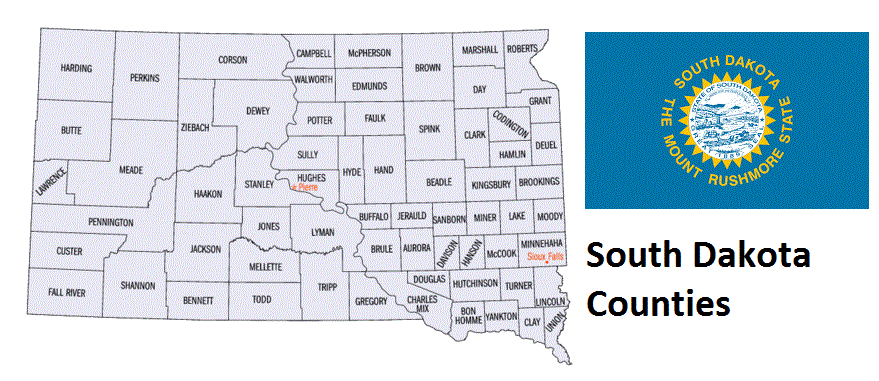List of All Counties in South Dakota
There are a total of 66 counties in the state of South Dakota. Among them, Bon Homme County is the oldest one (established in 1862) while Jones County is the youngest (established in 1916). With population of 169,468, Minnehaha County is the most populated. The biggest county by land area is Meade County (8,990 km²) and the smallest is Clay County (1,067 km²). Below please see all South Dakota counties which are listed in alphabetical order.
- Aurora County, SD
- Beadle County, SD
- Bennett County, SD
- Bon Homme County, SD
- Brookings County, SD
- Brown County, SD
- Brule County, SD
- Buffalo County, SD
- Butte County, SD
- Campbell County, SD
- Charles Mix County, SD
- Clark County, SD
- Clay County, SD
- Codington County, SD
- Corson County, SD
- Custer County, SD
- Davison County, SD
- Day County, SD
- Deuel County, SD
- Dewey County, SD
- Douglas County, SD
- Edmunds County, SD
- Fall River County, SD
- Faulk County, SD
- Grant County, SD
- Gregory County, SD
- Haakon County, SD
- Hamlin County, SD
- Hand County, SD
- Hanson County, SD
- Harding County, SD
- Hughes County, SD
- Hutchinson County, SD
- Hyde County, SD
- Jackson County, SD
- Jerauld County, SD
- Jones County, SD
- Kingsbury County, SD
- Lake County, SD
- Lawrence County, SD
- Lincoln County, SD
- Lyman County, SD
- Marshall County, SD
- McCook County, SD
- McPherson County, SD
- Meade County, SD
- Mellette County, SD
- Miner County, SD
- Minnehaha County, SD
- Moody County, SD
- Oglala Lakota County, SD
- Pennington County, SD
- Perkins County, SD
- Potter County, SD
- Roberts County, SD
- Sanborn County, SD
- Spink County, SD
- Stanley County, SD
- Sully County, SD
- Todd County, SD
- Tripp County, SD
- Turner County, SD
- Union County, SD
- Walworth County, SD
- Yankton County, SD
- Ziebach County, SD
Map of South Dakota Counties














































